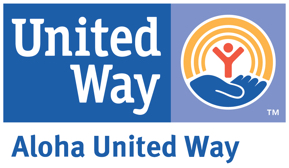Honolulu Star-Advertiser
State funds help homeless pay rent
June 2, 2016
Re-Print
Emma Kapiolani Garrett is excited about the possibility of moving into her first studio apartment on her own, thanks to state money that went through Aloha United Way and then to Catholic Charities Hawaii.
Garrett, 55, spent about a year living in her 1992 Toyota Corolla in the parking lot of Windward Mall before securing shelter in a shipping container unit at the city’s Hale Mauliola on Sand Island.
She is among the more than 300 people who are either homeless or at risk of becoming homeless, primarily on Oahu, and who received assistance from a portion of the $900,000 in state funds that Aloha United Way distributed to 18 social service agencies in April in an effort to reduce the highest per capita homeless rate in the nation.
In six weeks, $211,433 of state money had been used to help 58 families, 186 adults and 129 minors as of Wednesday. Three-quarters of the people assisted are on Oahu.
Cindy Adams, AUW’s president and CEO, said some agencies that received the state funds must first spend any outstanding money they’ve already received from the state or counties for similar services. In those cases, Adams said, “they may be off to a slow start because they had to draw that down.”
Garrett, who is looking for a suitable and affordable apartment on Oahu, is a recovering alcoholic and crystal meth addict, and a survivor of nearly a lifetime of domestic abuse, including being shot point-blank in the stomach by her then-husband with a .22-caliber handgun in 1992.
“I never knew the word ‘hope,’” Garrett said Wednesday outside her unit at Hale Mauliola. “That’s the thing I should have done, get help. I could have used so many resources out there.”
Garrett was unaware of AUW’s 211 phone system, which is being overhauled to better direct homeless people — or those at risk of becoming homeless — to services that can help.
In all, AUW is responsible for disbursing $5 million in state funds over the next year to help 1,300 households get off the streets or avoid becoming homeless.
Once a homeless client such as Garrett qualifies for up to three months’ worth of help with rent, utilities or security deposits, the money is supposed to be in the hands of a landlord within five days, Adams said.
“On April 15 we formerly launched and opened our doors for business,” Adams said. “It’s meant to be a very clean, very efficient, relatively reasonable turnaround.”
As part of a series of homeless-related emergency proclamations, Gov. David Ige’s administration waived normal procurement rules and awarded AUW the contract to distribute the $5 million. AUW was selected, in part, because it already administers Federal Emergency Management Agency money for one-time rental and utilities assistance and to fund community food banks.
AUW is bearing a contribution of $500,000 to help agencies administer the state money.
Out of the $5 million, $4.7 is earmarked for one-time rent or deposit assistance for up to three months.
The remaining $300,000 will be used to hire two more staff members, improve AUW’s 211 phone system and commission a study of four distinct groups that affect homeless-related services: young adults who age out of the foster care system; newly released prisoners; recently discharged and recovering addicts; and the chronically homeless who rely on hospital emergency rooms.
AUW is expected to pick an organization to conduct the study within the next few days. It plans to put the completed study in the hands of state legislators by March, said Norm Baker, AUW’s chief operating officer.
Since April, 158 people have called the “211 Homeless Coordination Center.” Some 76 percent of callers who needed homeless-related services had pending evictions prevented after calling 211, according to AUW.
“There are a lot of gaps in knowledge in terms of what services are available,” Baker said. “We’re learning a lot.”
Callers to 211 most commonly received free cellphones, bus passes, training in “financial literacy” and help applying for the federal Supplemental Nutrition Assistance Program.
“The biggest thing is financial literacy,” Baker said. “Most people don’t take advantage of it.”
Based on a model suggested by Connie Mitchell, executive director of the Institute for Human Services, AUW developed a 75-question script that 211 call center workers started using Tuesday to better refer callers to appropriate agencies, Adams said.
“We realized we needed to create an instrument to better understand who we’re talking to,” Adams said. “This has been a learning process for us.”
Within a week or so, AUW plans to post weekly updates every Friday afternoon on its website, reporting the latest numbers of people being served through the state’s $5 million.
Garrett — a mother of seven including one teen still in high school — smiled broadly, and repeatedly — on Wednesday at the help she’s getting. She maintains it’s the start of “a brand-new chapter, all brand-new.
“It’s been a long journey,” she added. “I couldn’t have done this by myself.”
